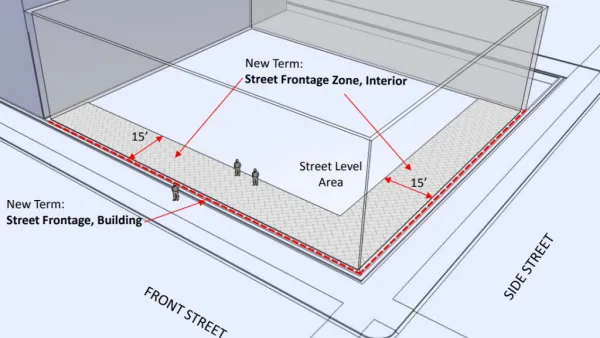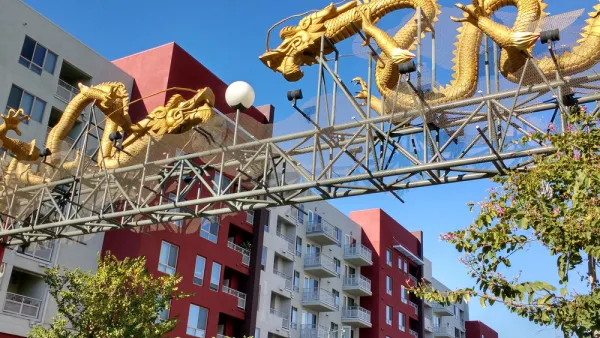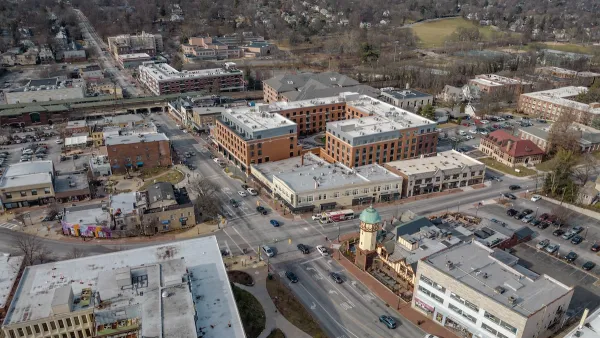The multifamily industry is building more in walkable locations, but developers still need instruction on the manners of placemaking. Here are some hints.
On Monday, I reported that many more multifamily units are being built on street grids, which offer important amenities to residents. Instead of density attached to a congested arterial road, urban apartments are connected to culture and walkable to shops, parks, and schools.
As the multifamily industry strides forward, challenges arise. Some developers have mastered the craft of building in an urban place and using active frontages. Others are merely plunking down buildings with little change in design from those that previously fronted parking lots.
Most communities still have conventional codes that are oblivious to the things that provide comfort to people on foot or bicycle — outside of their one-ton, four-wheel appendage. These elements include awnings and galleries, active building frontages, buildings that shape the public realm into an “outdoor room,” streetscape elements that provide enclosure and protection, and the screening of parking from the view of people on the street. Form-based codes, on the other hand, pay a lot of attention to these aspects of the public realm that improve livability.
FULL STORY: Making multifamily truly urban

Analysis: Cybertruck Fatality Rate Far Exceeds That of Ford Pinto
The Tesla Cybertruck was recalled seven times last year.

National Parks Layoffs Will Cause Communities to Lose Billions
Thousands of essential park workers were laid off this week, just before the busy spring break season.

Retro-silient?: America’s First “Eco-burb,” The Woodlands Turns 50
A master-planned community north of Houston offers lessons on green infrastructure and resilient design, but falls short of its founder’s lofty affordability and walkability goals.

Test News Post 1
This is a summary

Analysis: Cybertruck Fatality Rate Far Exceeds That of Ford Pinto
The Tesla Cybertruck was recalled seven times last year.

Test News Headline 46
Test for the image on the front page.
Urban Design for Planners 1: Software Tools
This six-course series explores essential urban design concepts using open source software and equips planners with the tools they need to participate fully in the urban design process.
Planning for Universal Design
Learn the tools for implementing Universal Design in planning regulations.
EMC Planning Group, Inc.
Planetizen
Planetizen
Mpact (formerly Rail~Volution)
Great Falls Development Authority, Inc.
HUDs Office of Policy Development and Research
NYU Wagner Graduate School of Public Service




























